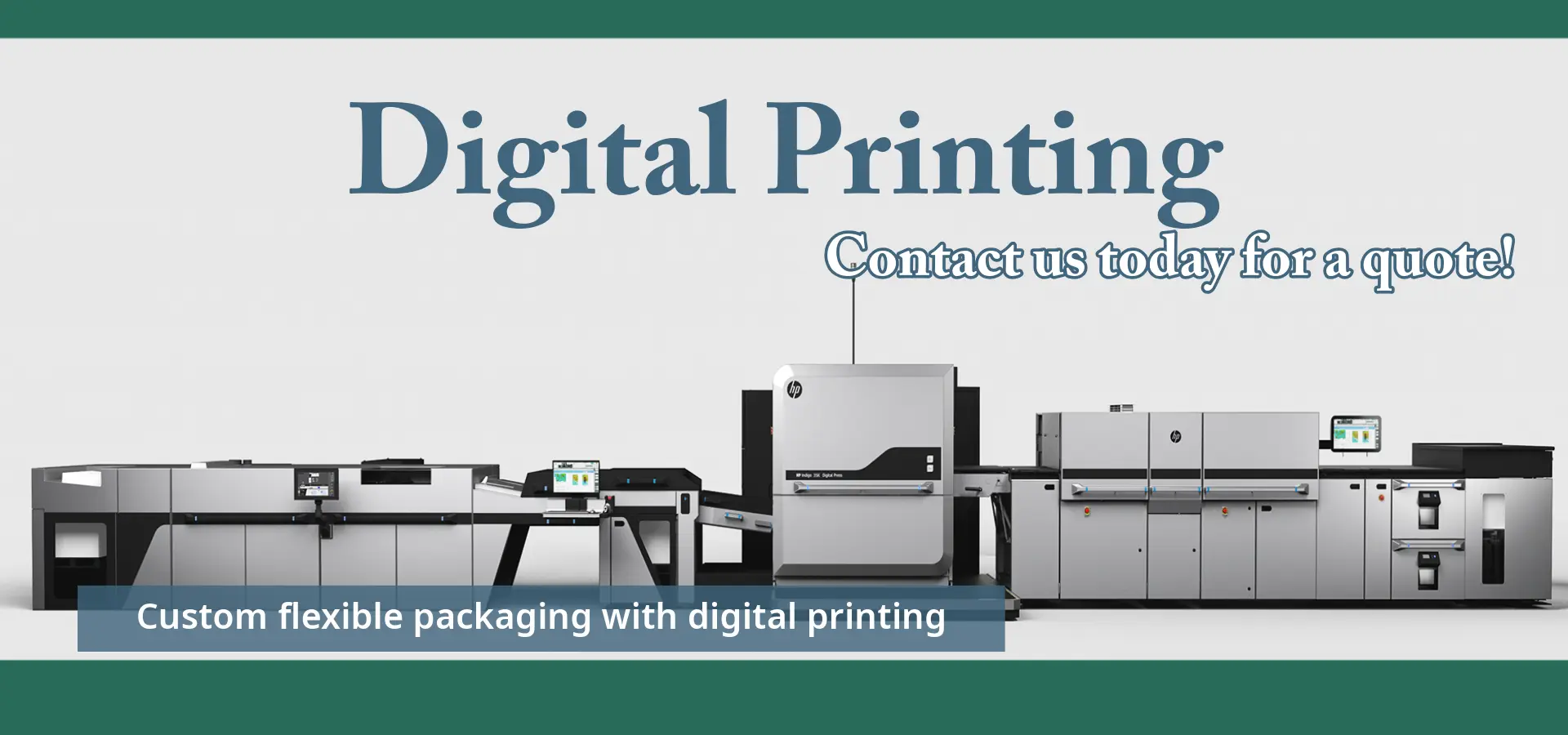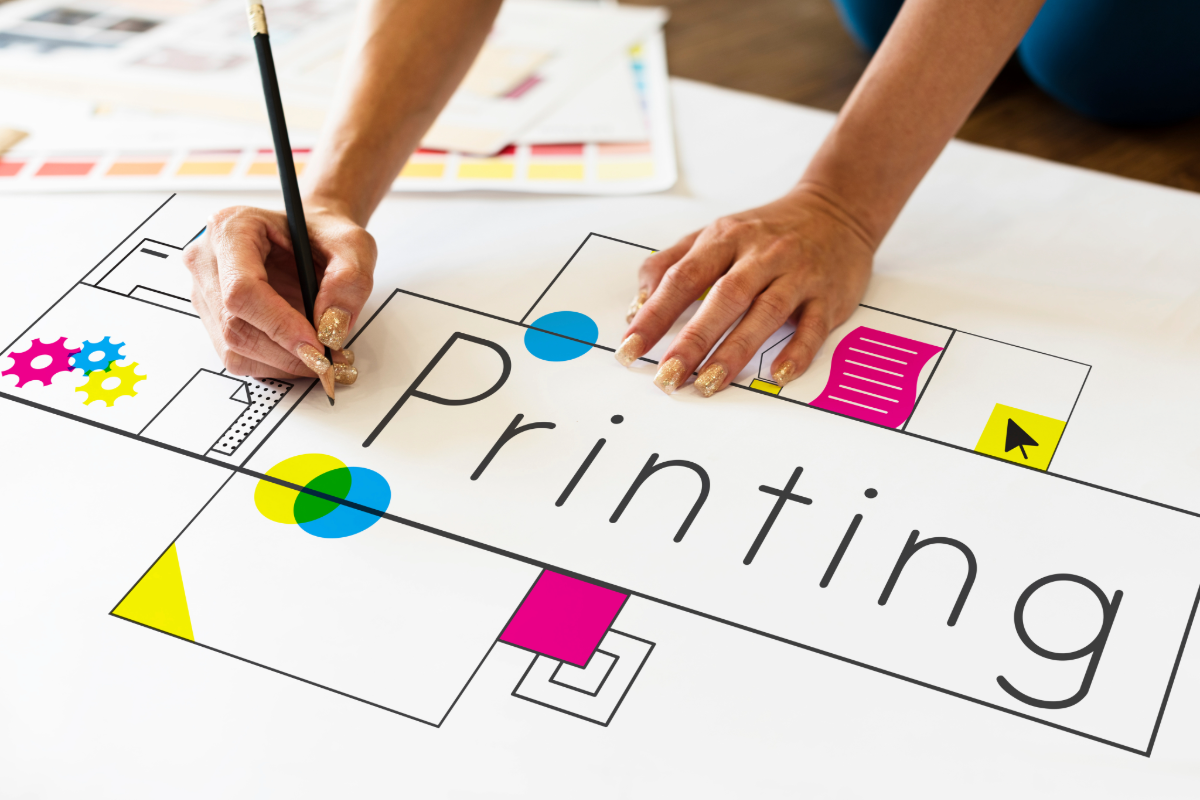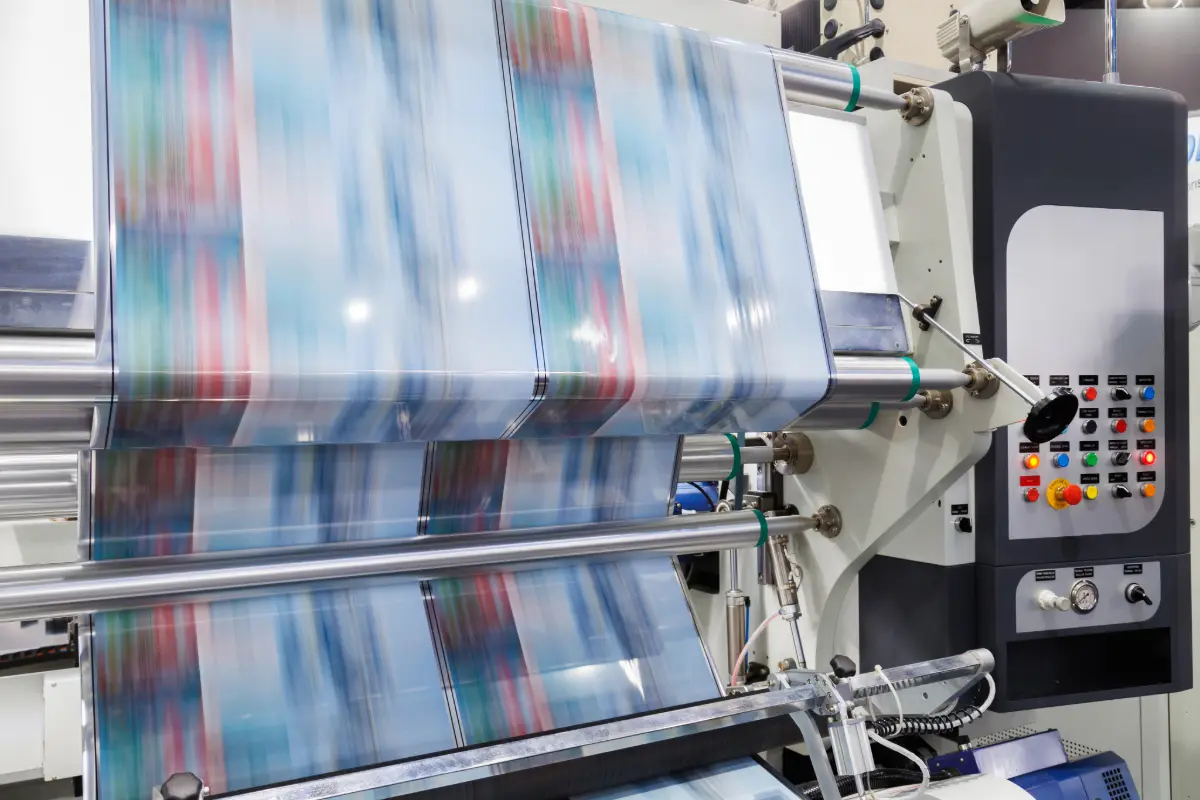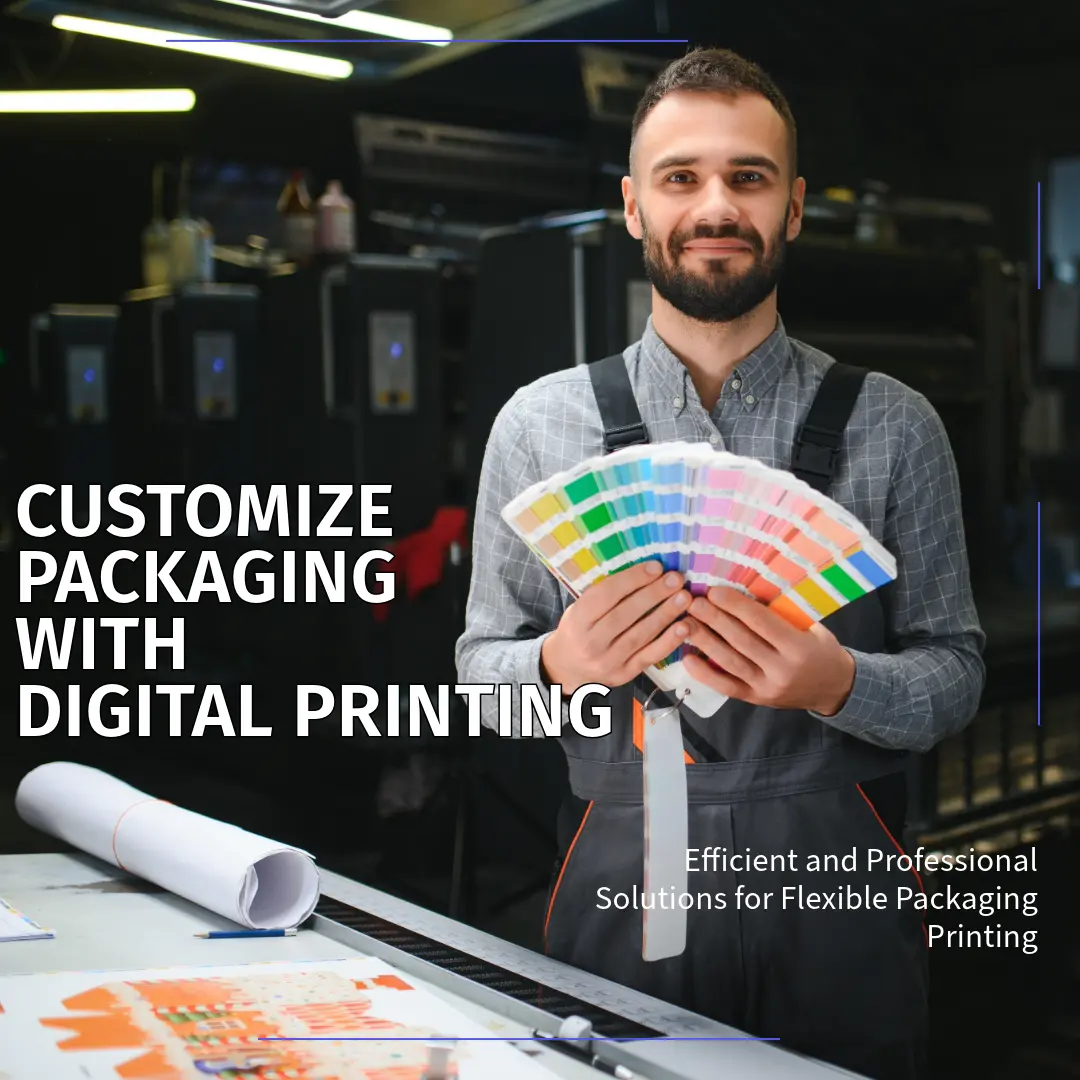Impressão Digital
What is digital printing in flexible packaging?
Digital printing in flexible packaging uses digital tech to print designs, text, and images on materials like plastic, foil, and paper. Unlike traditional methods that need printing plates, digital printing uses electronic files to transfer images directly. This results in faster turnaround, less waste, and easy customization for different products or campaigns.

Benefits of digital printing in packaging
Digital printing offers unmatched packaging design flexibility. It allows for quick changes and customization without costly plates. This means brands can easily adapt to trends or seasonal promotions.
Digital printing produces higher-quality prints than traditional printing. To print all of the colors, only one pass is necessary. Changes may be made even at the last minute before printing thanks to digital printing technology. Because there is no need for water, photo chemicals, or pre-press processes, digital printing packaging is considered an environmentally sustainable printing procedure. There is high demand for digital printing packaging market from various industries such as cosmetics, pharmaceuticals, food & beverage, and electrical & electronics. (Source: Digital Printing Packaging Market Research, 2031)
Speed is another key benefit. Traditional methods require long setup times, but digital printing enables faster turnaround. This is crucial in industries like snacks and candy or cosmetics, where time-to-market affects sales.
Kalead Pack’s ensures consistent quality across different packaging types, from spout pouches to mylar bags. Consistency builds consumer trust and brand loyalty.
Variable data printing (VDP) is also possible with digital methods. VDP allows unique codes, personalized messages, or QR codes on each package. This is particularly useful for promotions or tracking product batches.
Reducing environmental impact also occurs. Digital printing has a lower impact on the environment since it doesn’t require plates or excessive ink. It is an eco-friendly method for companies focusing on sustainability like those in organic food or cosmetics.
Cost efficiency cannot be overlooked. Small and medium businesses benefit from lower initial costs. It is ideal for niche markets since it allows smaller orders without high costs.
Brands impact of digital printing
Digital printing can help brands adapt to market trends. For example, a coffee brand can launch a limited-edition flavor with eye-catching designs within weeks. Speed-to-market is crucial in industries like snacks and candy, where trends change rapidly.
Digital printing also enables personalization and customization for large SKUs. Brands can create unique packaging for different customer segments or special events. A cosmetics company might design exclusive packaging for holiday seasons, increasing customer engagement and loyalty.
Environmental impact is another consideration. For SKUs, digital printing produces less waste and uses fewer resources. Customers are always seeking environmentally friendly products.
Packaging Digest reports that packaging design influences 70% of consumers when they make purchase decisions. Kalead Pack helps brands stand out in competitive markets like beauty and personal care, pet food, and frozen food.
Limitations of digital printing
Cost for Large Volumes
While digital printing is cost-effective for short runs, it becomes less economical for larger volumes. Flexography and gravure are cheaper for large print jobs because ink costs less and they print faster than other methods.
Material Compatibility
Digital printing is not compatible with all flexible packaging materials. Some materials need special surfaces to last long and work properly with digital printers. Not all materials are suitable.
Durability
Digital print packaging can be durable. Flexible packaging often undergoes significant handling and stress. Digital print inks may not be as durable as traditional inks against abrasion, moisture, and other environmental factors.
Finishing Processes
Digital printing may struggle with certain finishing processes. For example, achieving high-quality metallic finishes or complex varnishes can be difficult, limiting packaging style options.
Color System
Color Consistency and Quality
Achieving consistent and high-quality color can be challenging with digital printing. Traditional methods (gravure printing) are often more effective at keeping colors accurate and vibrant. This is crucial for brands that need precise color matching on their packaging.

Digital Printing Vs Gravure Printing
When comparing digital and impressão rotogravura for flexible packaging, key factors to consider are cost, quality, speed, and customization. Digital printing is cheaper for small orders due to lower setup costs, while gravure printing is best for large-scale production.
Gravure offers superior quality and color depth, but digital printing has improved significantly. Gravure printing is faster once set up, but digital is quicker to start for short runs.
Digital printing in customization and variable data, while gravure is less flexible. Environmentally, digital printing is more sustainable with lower waste and energy consumption.

Comparação entre Impressão Digital e Rotogravura
| Característica | Impressão Digital | Impressão em Rotogravura |
|---|---|---|
| Tempo de Configuração | Tempo de configuração mínimo | Tempo de configuração longo |
| Eficiência de Custos | Custo-eficiente para tiragens pequenas a médias | Custo-eficiente para tiragens grandes |
| Qualidade de Impressão | Impressões de alta qualidade, adequadas para designs detalhados | Qualidade de impressão superior, excelente para produção em grande volume |
| Personalização | Fácil de personalizar e customizar | Personalização limitada após a confecção dos cilindros |
| Tempo de Entrega | Entrega rápida para tiragens curtas | Entrega mais demorada devido à preparação dos cilindros |
| Investimento Inicial | Investimento inicial menor | Alto investimento inicial para cilindros |
| Consistência de Cores | Boa, mas pode variar entre lotes diferentes | Excelente consistência de cores em tiragens grandes |
| Geração de Resíduos | Resíduos mínimos | Maior geração de resíduos devido à configuração e calibração |
| Adequação | Melhor para tiragens curtas e impressão de dados variáveis | Melhor para tiragens longas e designs consistentes |
| Impacto Ambiental | Geralmente menor devido à menor geração de resíduos | Maior impacto ambiental devido a tintas à base de solventes e geração de resíduos |
Perguntas Frequentes
A impressão digital oferece entrega rápida, imagens de alta qualidade e tiragens curtas custo-eficientes. É ideal para personalização e pequenos lotes.
A impressão digital reduz resíduos ao usar apenas os materiais necessários. Também minimiza o consumo de energia em comparação com métodos tradicionais.
Você pode personalizar cores, imagens e texto facilmente. É adequado para promoções sazonais ou edições limitadas.
Para tiragens pequenas a médias, a impressão digital é mais custo-eficiente que métodos tradicionais devido a menores custos de configuração.

